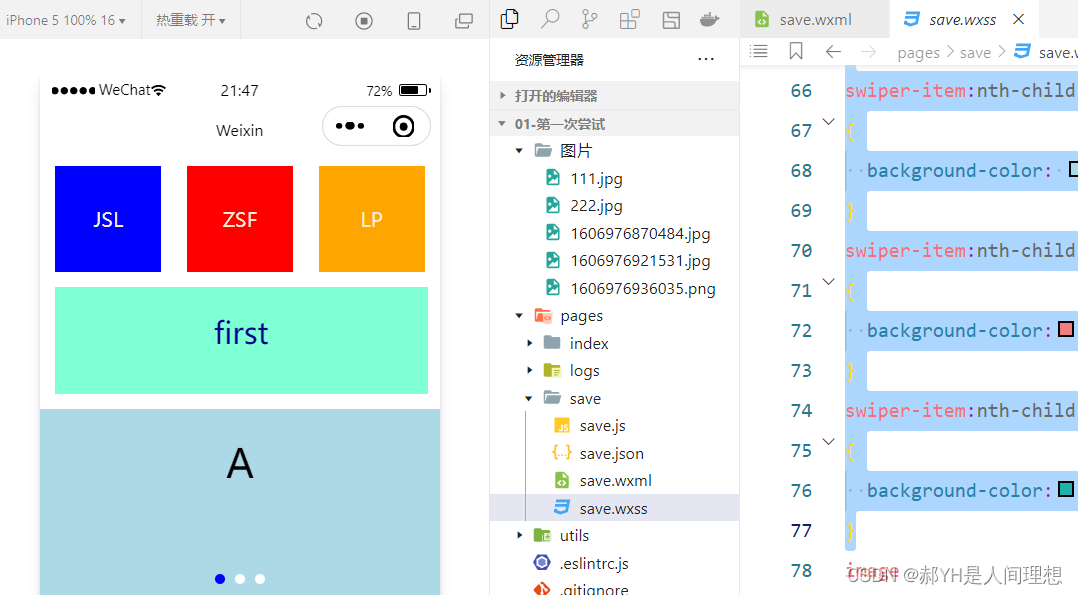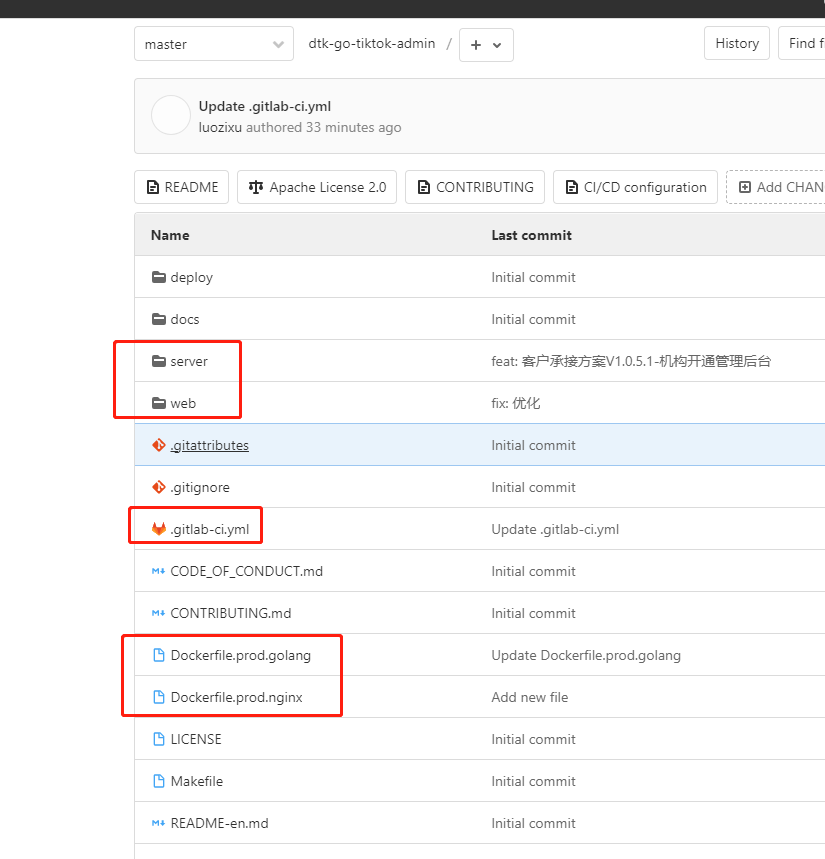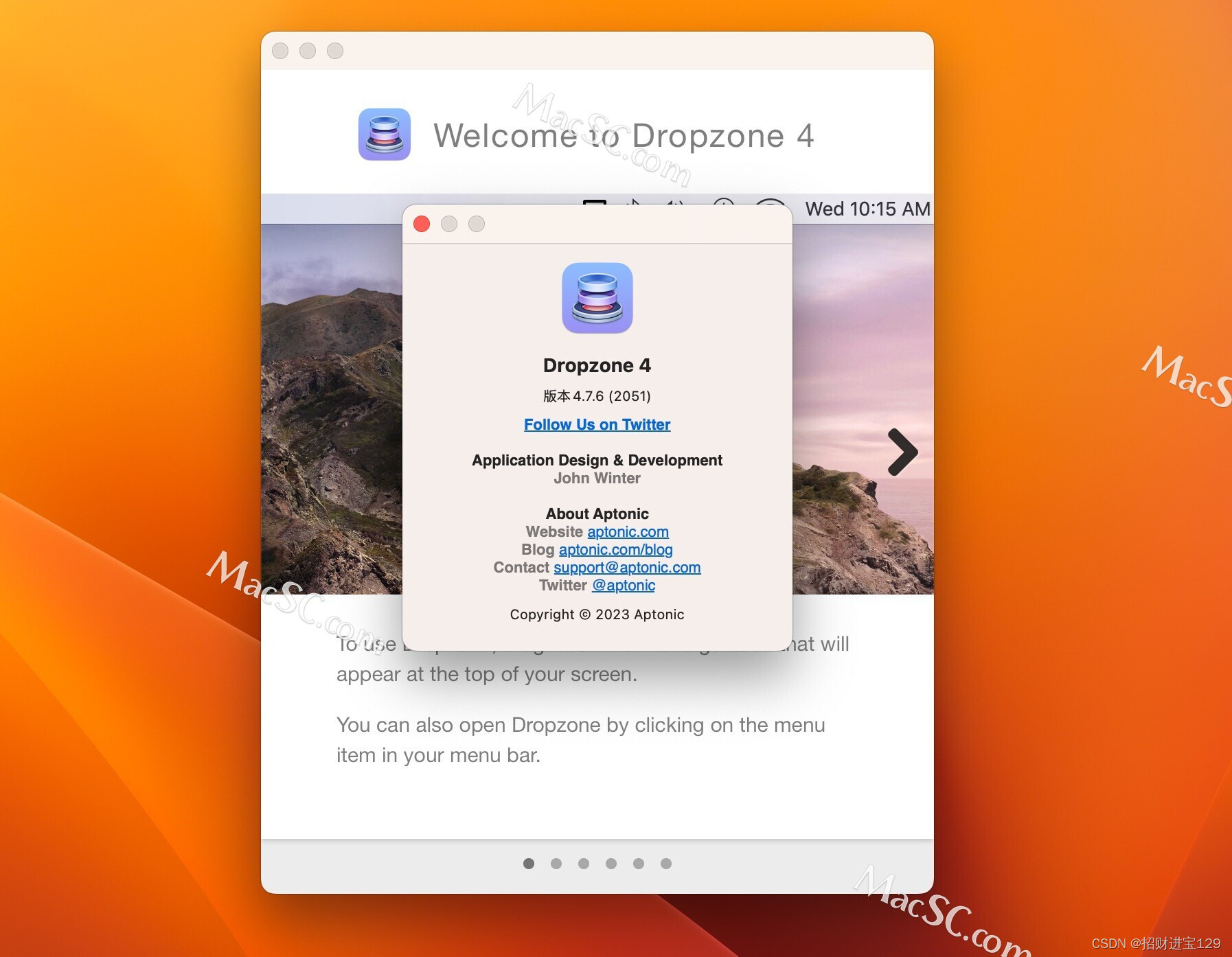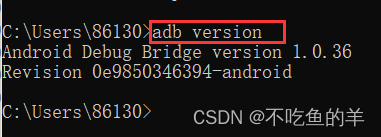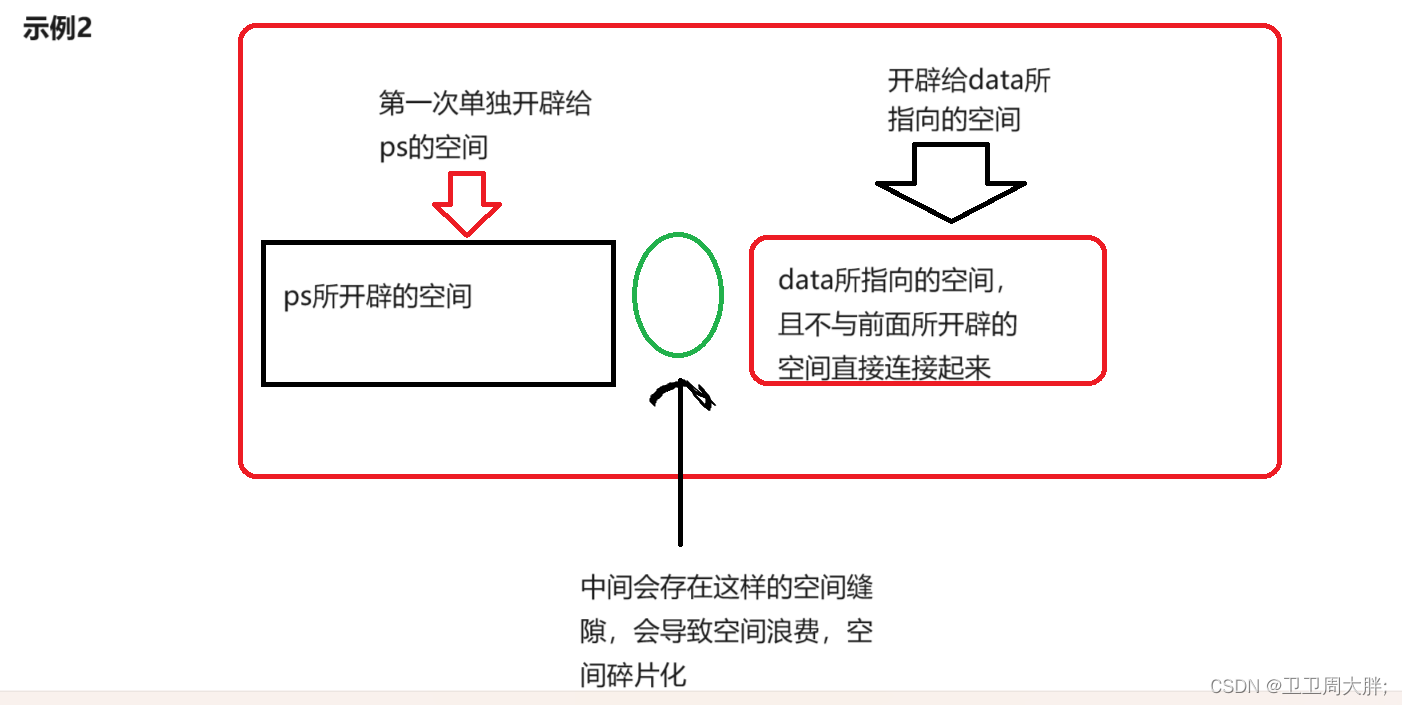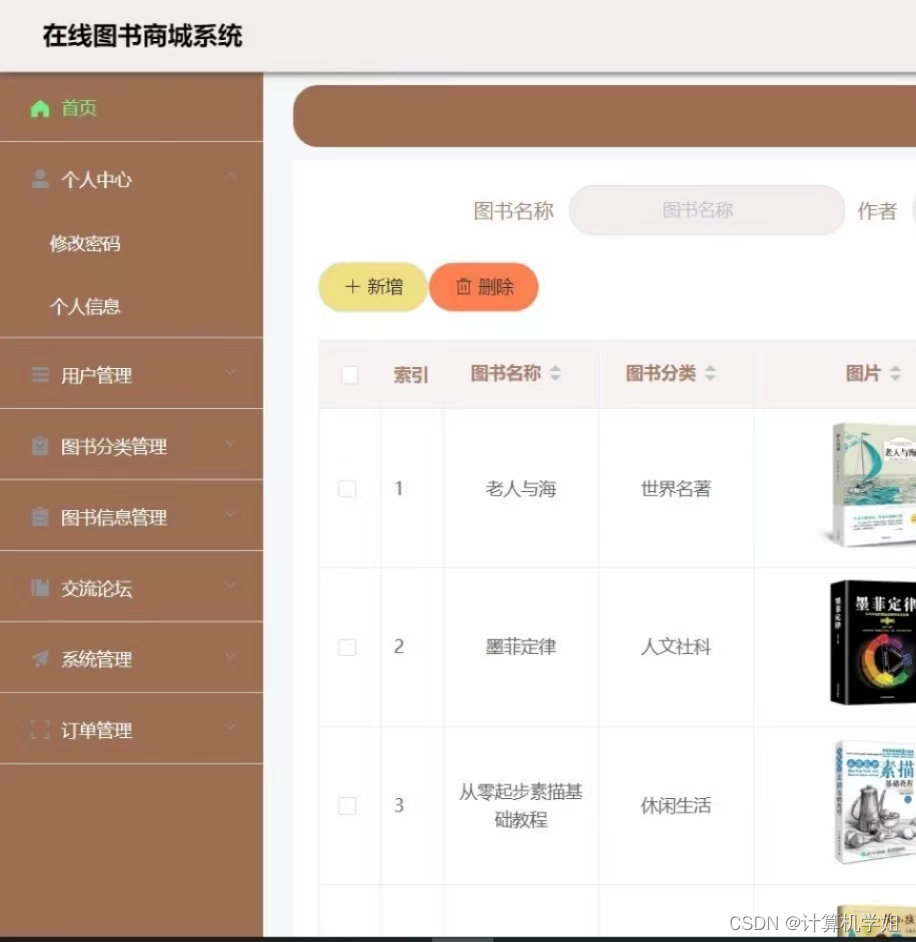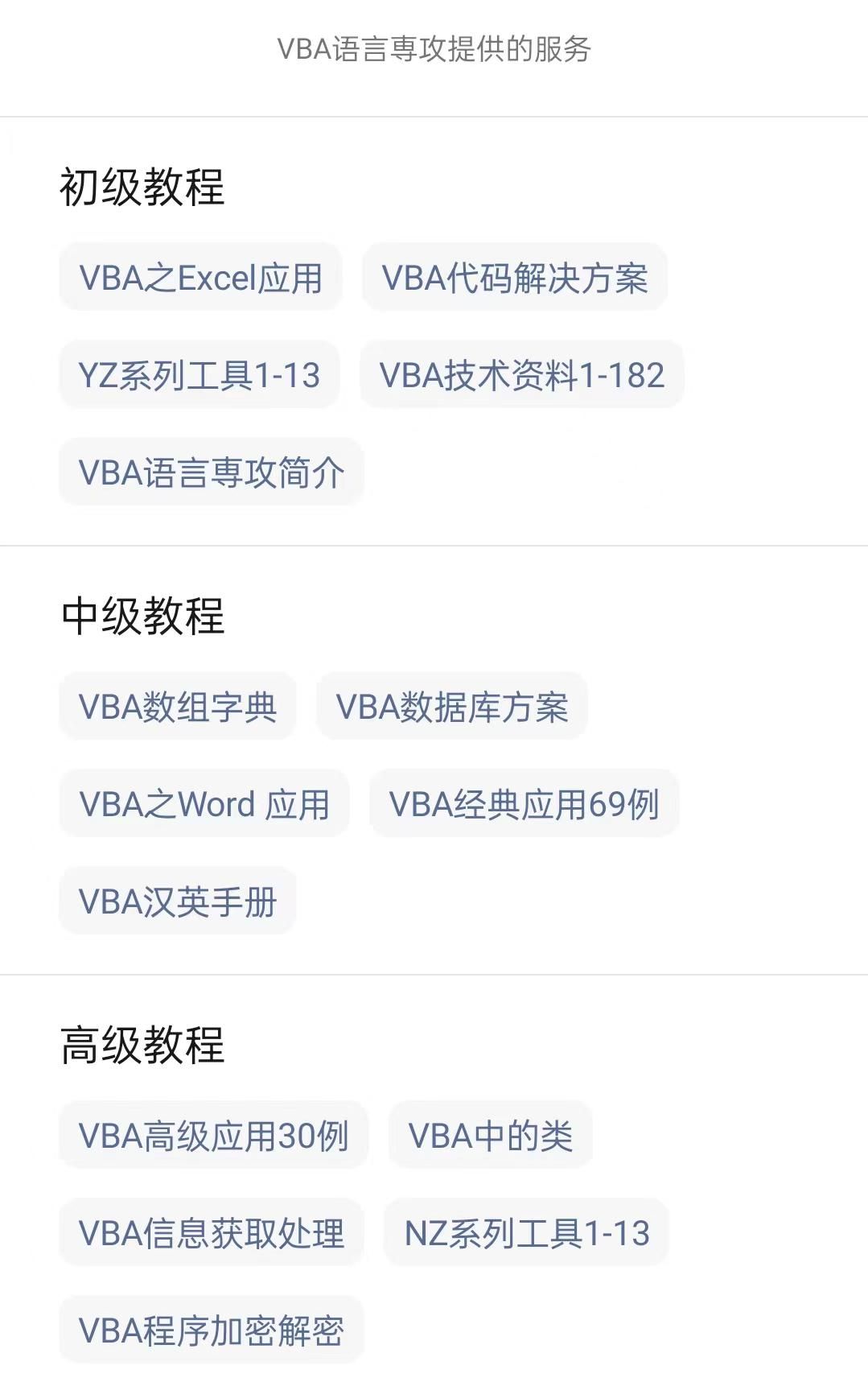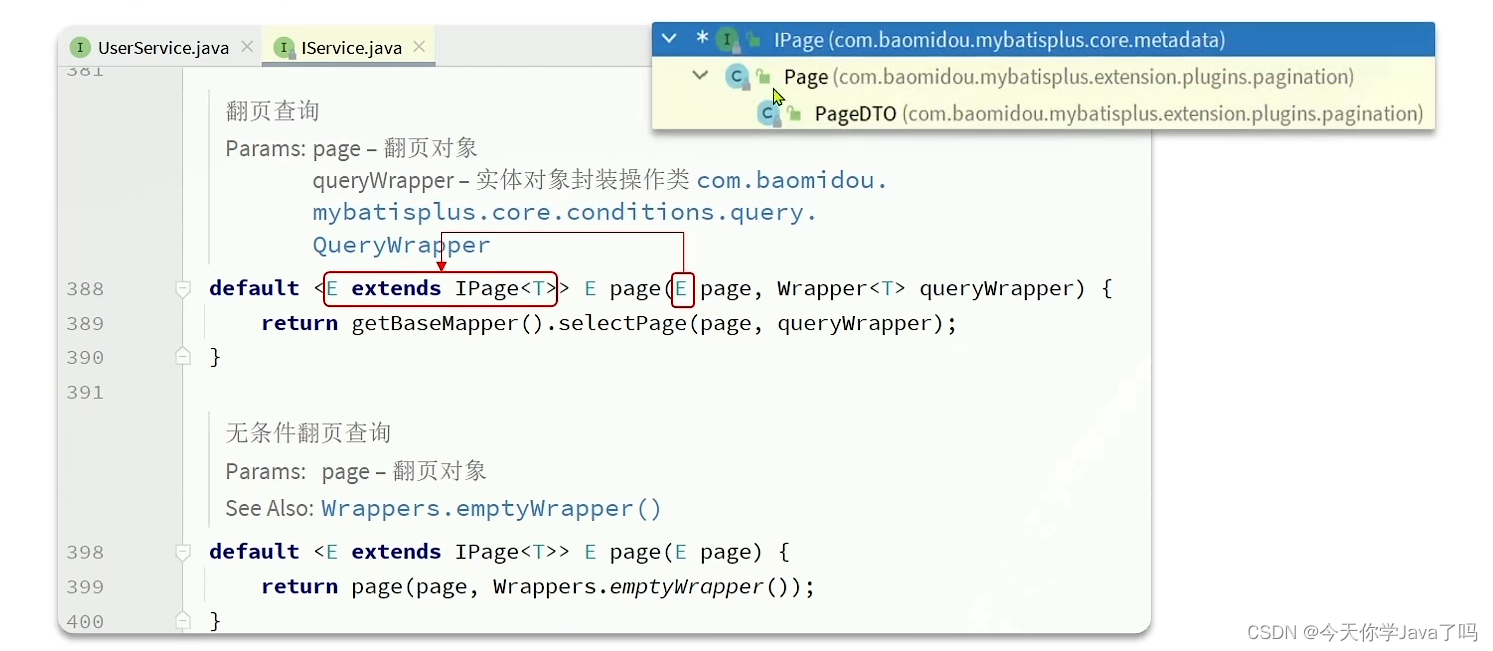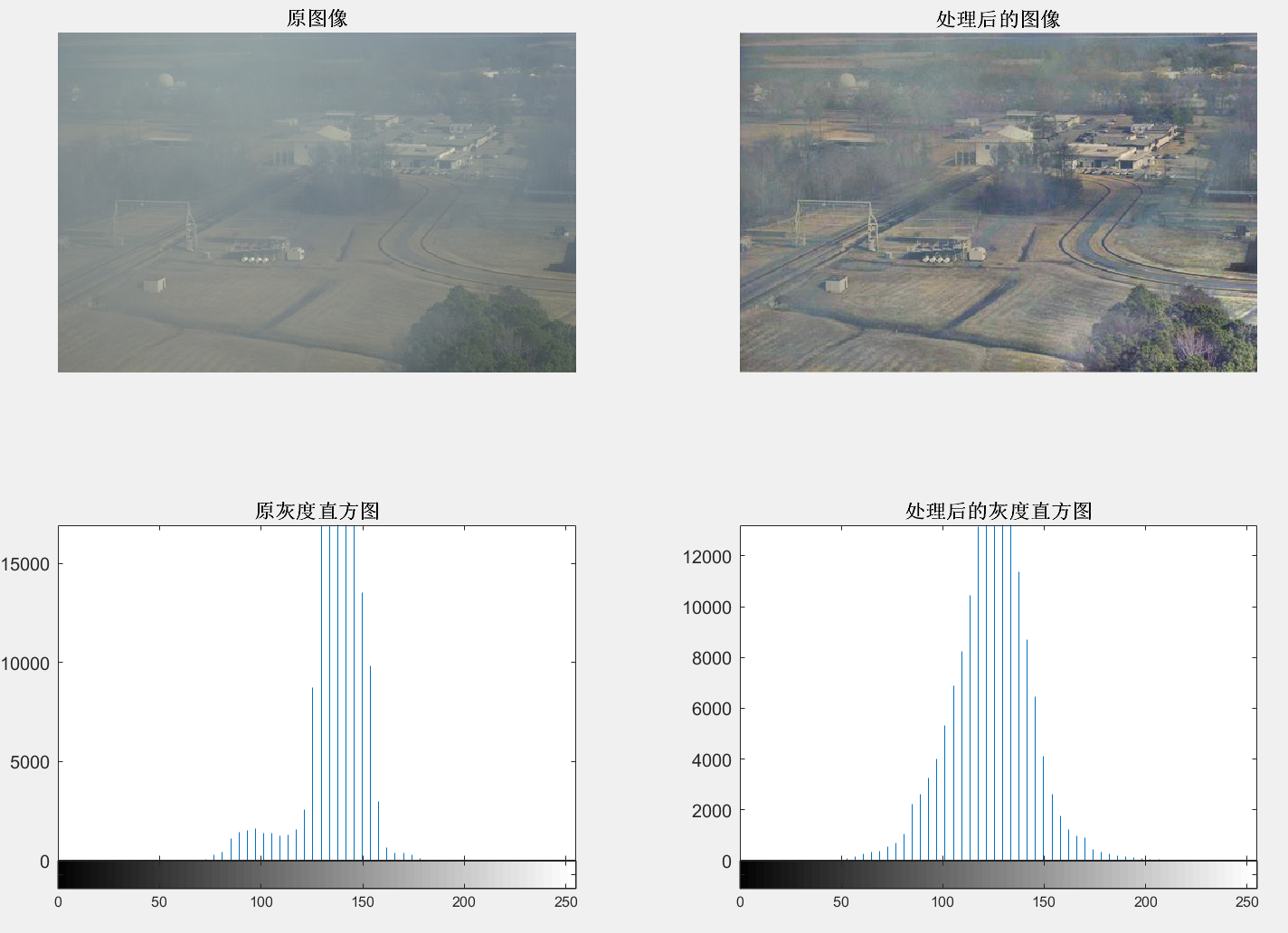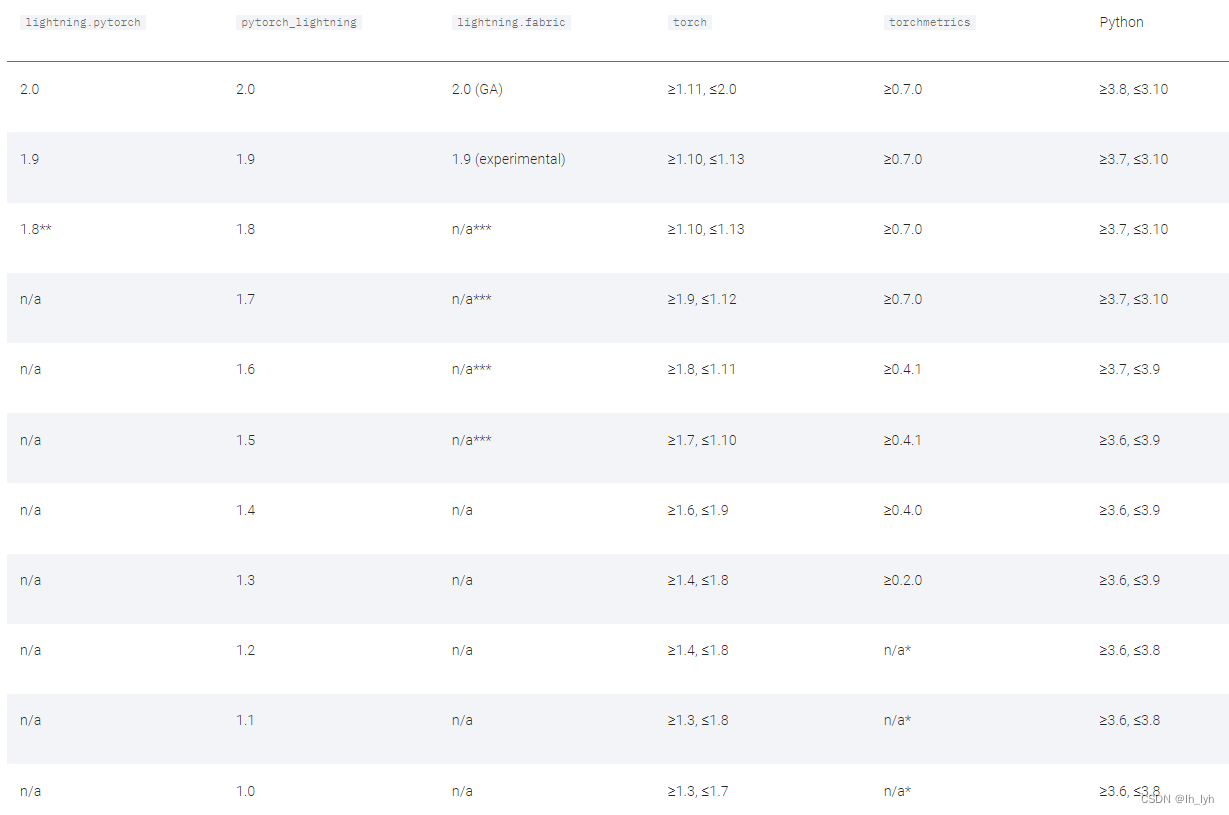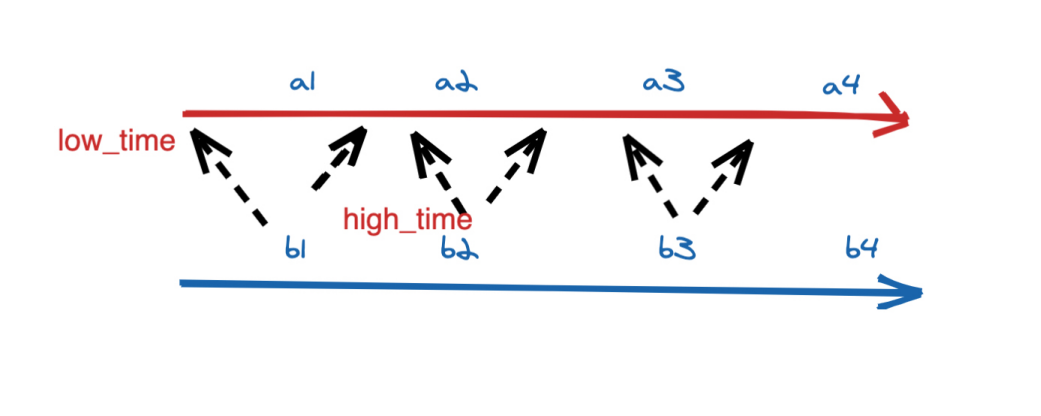文章目录
- 前言
- 一、常用注解
- 1.1 @AllArgsConstructor/@NoArgsConstructor/@RequiredArgsConstructor
- 1.2 @Builder
- 1.3 @Data
- 1.4 @EqualsAndHashCode
- 1.5 @Getter/@Setter
- 1.6 @Slf4j/@Log4j/@Log4j2/@Log
- 1.7 @ToString
- 二、踩坑
- 2.1 Getter/Setter 方法名不一样
- 2.2 @Builder 不会生成无参构造方法
- 2.3 @Builder 不能build父类属性
- 2.4 @ToString 栈溢出
- 2.5 影响单元测试覆盖率
- 三、源码探秘
- 3.1 APT与JSR 269
- 3.2 实现流程
- 3.3 源码追踪
- 四、优缺点
- 4.1 优点
- 4.2 缺点
- 参考
前言
Lombok 是一款在 Java 开发中广受欢迎的工具库,它能够显著简化 Java 代码的编写过程并减少样板代码的冗余。在面对频繁的getter和setter方法、构造函数、日志记录等重复性代码任务时,Lombok 的出现为开发者带来了极大的便利,无需手动编写这些重复性的代码,减少了代码量,提高了开发效率。
Lombok的使用非常简单,只需在项目中引入 Lombok 库,并在需要的类上添加相应的注解即可。另外,大多数流行的Java集成开发环境(IDE)也都提供了对Lombok 的支持,可以在代码编辑器中正确显示自动生成的代码, IDEA2021 已经内置 Lombok 了。
文档:https://projectlombok.org/features/
pom 依赖如下:
<dependency>
<groupId>org.projectlombok</groupId>
<artifactId>lombok</artifactId>
<version>1.18.20</version>
<scope>provided</scope>
</dependency>
一、常用注解
1.1 @AllArgsConstructor/@NoArgsConstructor/@RequiredArgsConstructor
这三个注解能够生成类的构造器
-
@AllArgsConstructor能够生成由所有参数构造的构造方法@AllArgsConstructor public class Test { private Integer age; private String userName; }生成构造方法,参数顺序为实例类中元素顺序
public class Test { private Integer age; private String userName; public Test(Integer age, String userName) { this.age = age; this.userName = userName; } } -
@NoArgsConstructor能够生成无参构造方法@NoArgsConstructor public class Test { private Integer age = 1; private String userName = ""; }生成无参构造方法
public class Test { private Integer age; private String userName; public Test() { } } -
@RequiredArgsConstructor可以为类内final字段和被@nonNull修饰的字段 添加构造方法@RequiredArgsConstructor public class Test { private Integer age; private String userName; private final String password; @NonNull private String [] lists; }转化为
public class Test { private Integer age; private String userName; private final String password; private @NonNull String[] lists; public Test(String password, @NonNull String[] lists) { if (lists == null) { throw new NullPointerException("lists is marked non-null but is null"); } else { this.password = password; this.lists = lists; } } }
1.2 @Builder
@builder 能够生成支持Builder模式的类,提供一种灵活、可读性高且易于维护的方式来构建对象,尤其是当对象具有多个属性,且需要支持可选参数和默认值时,Builder模式特别有用.
@Builder
public class Test {
@Builder.Default
private Integer age = 18;
private String userName;
private final String password;
@NonNull
private String [] lists;
}
转化如下:
public class Test {
private Integer age;
private String userName;
private final String password;
private @NonNull String[] lists;
private static Integer $default$age() {
return 18;
}
Test(Integer age, String userName, String password, @NonNull String[] lists) {
if (lists == null) {
throw new NullPointerException("lists is marked non-null but is null");
} else {
this.age = age;
this.userName = userName;
this.password = password;
this.lists = lists;
}
}
public static TestBuilder builder() {
return new TestBuilder();
}
public static class TestBuilder {
private boolean age$set;
private Integer age$value;
private String userName;
private String password;
private String[] lists;
TestBuilder() {
}
public TestBuilder age(Integer age) {
this.age$value = age;
this.age$set = true;
return this;
}
public TestBuilder userName(String userName) {
this.userName = userName;
return this;
}
public TestBuilder password(String password) {
this.password = password;
return this;
}
public TestBuilder lists(@NonNull String[] lists) {
if (lists == null) {
throw new NullPointerException("lists is marked non-null but is null");
} else {
this.lists = lists;
return this;
}
}
public Test build() {
Integer age$value = this.age$value;
if (!this.age$set) {
age$value = Test.$default$age();
}
return new Test(age$value, this.userName, this.password, this.lists);
}
public String toString() {
return "Test.TestBuilder(age$value=" + this.age$value + ", userName=" + this.userName + ", password=" + this.password + ", lists=" + Arrays.deepToString(this.lists) + ")";
}
}
}
1.3 @Data
等价于 @Getter, @Setter, @RequiredArgsConstructor, @ToString, @EqualsAndHashCode
1.4 @EqualsAndHashCode
能够生成equals 和hashCode方法, 可通过 callSuper = true 来调用父类的同名方法,不参与计算的属性可通过@EqualsAndHashCode.Exclude进行排除
@EqualsAndHashCode
public class Test {
private Integer age = 18;
private String userName;
}
转化为
public class Test {
private Integer age = 18;
private String userName;
public Test() {
}
public boolean equals(Object o) {
if (o == this) {
return true;
} else if (!(o instanceof Test)) {
return false;
} else {
Test other = (Test)o;
if (!other.canEqual(this)) {
return false;
} else {
Object this$age = this.age;
Object other$age = other.age;
if (this$age == null) {
if (other$age != null) {
return false;
}
} else if (!this$age.equals(other$age)) {
return false;
}
Object this$userName = this.userName;
Object other$userName = other.userName;
if (this$userName == null) {
if (other$userName != null) {
return false;
}
} else if (!this$userName.equals(other$userName)) {
return false;
}
return true;
}
}
}
protected boolean canEqual(Object other) {
return other instanceof Test;
}
public int hashCode() {
int PRIME = 59; // 这里IDEA反编译有bug,显示为int PRIME = true;
int result = 1;
Object $age = this.age;
result = result * 59 + ($age == null ? 43 : $age.hashCode());
Object $userName = this.userName;
result = result * 59 + ($userName == null ? 43 : $userName.hashCode());
return result;
}
1.5 @Getter/@Setter
生成getter和setter方法,默认跳过静态字段和以$开头的字段
@Getter
@Setter
public class Test {
private Integer age = 18;
private String userName;
}
转化为
public class Test {
private Integer age = 18;
private String userName;
public Test() {
}
public Integer getAge() {
return this.age;
}
public String getUserName() {
return this.userName;
}
public void setAge(Integer age) {
this.age = age;
}
public void setUserName(String userName) {
this.userName = userName;
}
}
1.6 @Slf4j/@Log4j/@Log4j2/@Log
在类中生成1个字段log,用于记录日志, 使用不同的日志框架可以使用不同的注解
@log4j2
public class Test {
private Integer age = 18;
private String userName;
public static void main(String[] args) {
log.info("{}在哪?", "我");
}
}
public class Test {
private static final Logger log = LogManager.getLogger(Test.class);
private Integer age = 18;
private String userName;
public Test() {
}
public static void main(String[] args) {
log.info("{}在哪?", new Object[]{"我"});
}
}
1.7 @ToString
默认将打印所有非静态字段,可以用@ToString.Exclude注解排除不想打印的字段
@ToString
public class Test {
private Integer age;
private String userName;
}
public class Test {
private Integer age;
private String userName;
public Test() {
}
public String toString() {
return "Test(age=" + this.age + ", userName=" + this.userName + ")";
}
}
二、踩坑
2.1 Getter/Setter 方法名不一样
在类中,开头只有一个小写字母的字段,如 iPhone, 当使用 Lombok 生成 getter、setter 方法时,它生成getter和setter方法如下:
public String getIPhone() {
return this.iPhone;
}
public void setIPhone(String iPhone) {
this.iPhone = iPhone;
}
和在IDEA中使用快捷键生成的不一样
public String getiPhone() {
return iPhone;
}
public void setiPhone(String iPhone) {
this.iPhone = iPhone;
}
在 SpringBoot 项目中使用 @RequestBody 接收 json 数据时,默认通过 Jackson 处理 ,而 jackson 处理实体,会从getter/setter方法获取具体的字段名,具体源码位于DefaultAccessorNamingStrategy.legacyManglePropertyName, 如下所示:
/**
* Method called to figure out name of the property, given
* corresponding suggested name based on a method or field name.
*
* @param basename Name of accessor/mutator method, not including prefix
* ("get"/"is"/"set")
*/
protected String legacyManglePropertyName(final String basename, final int offset)
{
final int end = basename.length();
if (end == offset) { // empty name, nope
return null;
}
char c = basename.charAt(offset);
// 12-Oct-2020, tatu: Additional configurability; allow checking that
// base name is acceptable (currently just by checking first character)
if (_baseNameValidator != null) {
if (!_baseNameValidator.accept(c, basename, offset)) {
return null;
}
}
// next check: is the first character upper case? If not, return as is
char d = Character.toLowerCase(c);
if (c == d) {
return basename.substring(offset);
}
// otherwise, lower case initial chars. Common case first, just one char
StringBuilder sb = new StringBuilder(end - offset);
sb.append(d);
int i = offset+1;
for (; i < end; ++i) {
c = basename.charAt(i);
d = Character.toLowerCase(c);
if (c == d) {
sb.append(basename, i, end);
break;
}
sb.append(d);
}
return sb.toString();
}
以上代码会将生成的 set/get/is 等方法获取字段, 将方法中 set/get/is 按照偏移量移除,然后找到第一个小写的字符,之前的大写字符都会变为小写,这就会导致问题,IPhone会变为 iphone 和字段 iPhone 不同,会导致问题
Lombok 开发者也意识到这种问题,并提供了解决方案:https://projectlombok.org/features/GetterSetter
lombok.accessors.capitalization= [basic|beanspec] (default: basic)Controls how tricky cases like
uShaped(one lowercase letter followed by an upper/titlecase letter) are capitalized.basiccapitalizes that togetUShaped, andbeanspeccapitalizes that togetuShapedinstead.
Both strategies are commonly used in the java ecosystem, thoughbeanspecis more common.
用 Lombok 的配置来解决。在项目resource目录下创建 lombok.config文件,并添加以下配置项
lombok.accessors.capitalization = beanspec
2.2 @Builder 不会生成无参构造方法
当使用@Builder后,会有生成全部参数的构造函数,但是没有无参构造方法,这对Spring IOC等框架不太友好,框架需要无参构造函数构造对象。所以,第一感觉就是再加上@NoArgsConstructor,但是又报错了.
原因分析:如果只是@Builder,那会生成全参构造方法,加上@NoArgsConstructor,全参构造方法就没了。翻看源码文档
If a class is annotated, then a package-private constructor is generated with all fields as arguments (as if @AllArgsConstructor(access = AccessLevel.PACKAGE) is present on the class), and it is as if this constructor has been annotated with @Builder instead. Note that this constructor is only generated if you haven’t written any constructors and also haven’t added any explicit @XArgsConstructor annotations. In those cases, lombok will assume an all-args constructor is present and generate code that uses it; this means you’d get a compiler error if this constructor is not present
翻译一下
如果一个类被注解,那么将生成一个包专用构造函数,其中所有字段都作为参数(就好像类上存在@AllArgsConstructor(access=AccessLevel.package)一样),并且就好像这个构造函数是用@Builder注解的一样。请注意,只有当您没有编写任何构造函数,也没有添加任何显式@XArgsConstructor注解时,才会生成此构造函数。在这些情况下,lombok将假设存在一个all-args构造函数,并生成使用它的代码;这意味着如果这个构造函数不存在,就会出现编译器错误。
文档说的很明白,当加上@NoArgsConstructor时,不会生成全参构造方法,造成编译错误
解决方法:很简单,再加上@AllArgsConstructor
2.3 @Builder 不能build父类属性
有两种方案:
-
添加一个构造方法,包含父类的属性
@Data @AllArgsConstructor public class Parent { private String foo; private Integer bar; }@ToString(callSuper = true) public class Child extends Parent { private Integer age; private String userName; @Builder public Child(String foo, Integer bar, Integer age, String userName) { super(foo, bar); this.age = age; this.userName = userName; } } -
使用
@Superbuilder, 这是实验性的 API,不知未来是否删除,慎用@Data @AllArgsConstructor @SuperBuilder public class Parent { private String foo; private Integer bar; }@ToString(callSuper = true) @SuperBuilder public class Child extends Parent { private Integer age; private String userName; }
2.4 @ToString 栈溢出
在使用 JPA 时,实体之间为多对多关系,相互引用,在调用toString方法是陷入无限递归,栈溢出
可以使用@ToString.Exclude 注解排除多对多引用的字段
2.5 影响单元测试覆盖率
在项目中使用了**@Data** 注解,在使用 Jacoco 对代码进行单元测试,会发现测试覆盖率比较低,一些自动生成的方法没有覆盖到
解决方法:加上以下配置,Lombok会在为由其生成的构造方法、方法、字段和类型中增加@Generated注解,然后Jacoco借助这个注解来实现更为准去的排除。
config.stopBubbling = true
lombok.addLombokGeneratedAnnotation = true
三、源码探秘
3.1 APT与JSR 269
编译时注解有以下两种方案:
-
APT(Annotation Processing Tool),自JDK5产生,JDK7已标记为过期,不推荐使用,JDK8中已彻底删除,自JDK6开始,可以使用Pluggable Annotation Processing API来替换它,apt被替换主要有2点原因:
- api都在com.sun.mirror非标准包下
- 没有集成到javac中,需要额外运行
-
JSR-269(Pluggable Annotation Processing API,插件式注解处理器)JDK6 开始纳入了规范,作为apt的替代方案,它解决了apt的以上两个问题。关于处理注解的包在
javax.annotation.processing, 集成到javac中,javac 过程如下:
- Parse and Enter:所有在命令行中指定的源文件都被读取,解析成语法树,然后所有外部可见的定义都被输入到编译器的符号表中。
- Annotation Processing:调用所有适当的注解处理器。如果任何注解处理程序生成任何新的源文件或类文件,则重新开始编译,直到没有创建任何新文件为止。
- Analyse and Generate:最后,解析器创建的语法树将被分析并转换为类文件。在分析过程中,可能会发现对其他类的引用。编译器将检查这些类的源和类路径,如果在源路径上找到它们,也会编译这些文件,尽管它们不需要进行注解处理。
3.2 实现流程
在Javac 解析成 AST(Abstract Syntax Tree, 抽象语法树)之后, Lombok 根据自己编写的注解处理器,动态地修改 AST,增加新的节点(即Lombok自定义注解所需要生成的代码),最终通过分析生成 JVM 可执行的字节码Class文件。
具体流程如下:
- 在编译Java源代码时,Java编译器会调用注解处理器API。注解处理器会扫描源代码中的注解,找到Lombok相关的注解。
- 注解处理器:Lombok的注解处理器会解析并处理这些注解。它会通过解析AST来了解源代码的结构,并根据注解生成相应的代码。
- 代码生成:根据注解的类型,Lombok的注解处理器会生成与注解相关的代码片段。例如,
@Getter注解会自动生成对应属性的getter方法,@Setter注解会自动生成对应属性的setter方法。 - 代码替换:生成的代码片段将会替换原始源代码中与注解相关的部分。这意味着在编译后的字节码中,生成的代码将取代原始代码,从而实现了代码的增强和简化。
- 编译结果:最终,通过注解处理器的处理,源代码中标记了Lombok注解的部分将会被替换为生成的代码。这些生成的代码将包含在编译后的类文件中,以便在运行时使用。
3.3 源码追踪
打开 lombok.jar 文件,会发现不包含许多.class文件,而是包含名为.SCL.lombok的文件。其实.SCL.lombok文件是.class文件, Lombok 的构建脚本在生成 jar 文件时重命名它们,而 ShadowClassLoader 能够加载这些类,并且首字母缩略词 SCL 似乎来自于此,似乎这样做的原因只是"避免使用基于 SC L的 jar 污染任何项目的命名空间
lombok jar包从maven下载源码,有部分代码找不到源码,IDEA反编译为空,暂未找到解决方法
下面以@Get注解为例,查看 lombok 是如何生成getter方法的:
-
首先找到的类是
LombokProcessor这个类,它继承了AbstractProcessor, 我们知道在自定义一个 APT 的时候需要继承AbstractProcessor,并实现其最核心的 process 方法来对当前轮编译的结果进行处理,在 Lombok 中也不例外,Lombok 也是通过一个顶层的Processor来接收当前轮的编译结果,而这个 Processor 就是LombokProcessor重点关注process方法的这一段transformer.transform(prio, javacProcessingEnv.getContext(), cusForThisRound, cleanup); -
JavacTransformer.transform具体如下
public void transform(long priority, Context context, List<JCCompilationUnit> compilationUnits, CleanupRegistry cleanup) { for (JCCompilationUnit unit : compilationUnits) { if (!Boolean.TRUE.equals(LombokConfiguration.read(ConfigurationKeys.LOMBOK_DISABLE, JavacAST.getAbsoluteFileLocation(unit)))) { JavacAST ast = new JavacAST(messager, context, unit, cleanup); ast.traverse(new AnnotationVisitor(priority)); handlers.callASTVisitors(ast, priority); if (ast.isChanged()) LombokOptions.markChanged(context, (JCCompilationUnit) ast.top().get()); } } }获取 AST , traverse 遍历
-
继续追踪,找到注解,根据注解位置处理
public void traverse(JavacASTVisitor visitor) { switch (this.getKind()) { case COMPILATION_UNIT: visitor.visitCompilationUnit(this, (JCCompilationUnit) get()); ast.traverseChildren(visitor, this); visitor.endVisitCompilationUnit(this, (JCCompilationUnit) get()); break; case TYPE: visitor.visitType(this, (JCClassDecl) get()); ast.traverseChildren(visitor, this); visitor.endVisitType(this, (JCClassDecl) get()); break; case FIELD: visitor.visitField(this, (JCVariableDecl) get()); ast.traverseChildren(visitor, this); visitor.endVisitField(this, (JCVariableDecl) get()); break; case METHOD: visitor.visitMethod(this, (JCMethodDecl) get()); ast.traverseChildren(visitor, this); visitor.endVisitMethod(this, (JCMethodDecl) get()); break; case INITIALIZER: visitor.visitInitializer(this, (JCBlock) get()); ast.traverseChildren(visitor, this); visitor.endVisitInitializer(this, (JCBlock) get()); break; case ARGUMENT: JCMethodDecl parentMethod = (JCMethodDecl) up().get(); visitor.visitMethodArgument(this, (JCVariableDecl) get(), parentMethod); ast.traverseChildren(visitor, this); visitor.endVisitMethodArgument(this, (JCVariableDecl) get(), parentMethod); break; case LOCAL: visitor.visitLocal(this, (JCVariableDecl) get()); ast.traverseChildren(visitor, this); visitor.endVisitLocal(this, (JCVariableDecl) get()); break; case STATEMENT: visitor.visitStatement(this, get()); ast.traverseChildren(visitor, this); visitor.endVisitStatement(this, get()); break; case ANNOTATION: switch (up().getKind()) { case TYPE: // @Getter放在类上会执行这段 visitor.visitAnnotationOnType((JCClassDecl) up().get(), this, (JCAnnotation) get()); break; case FIELD: visitor.visitAnnotationOnField((JCVariableDecl) up().get(), this, (JCAnnotation) get()); break; case METHOD: visitor.visitAnnotationOnMethod((JCMethodDecl) up().get(), this, (JCAnnotation) get()); break; case ARGUMENT: JCVariableDecl argument = (JCVariableDecl) up().get(); JCMethodDecl method = (JCMethodDecl) up().up().get(); visitor.visitAnnotationOnMethodArgument(argument, method, this, (JCAnnotation) get()); break; case LOCAL: visitor.visitAnnotationOnLocal((JCVariableDecl) up().get(), this, (JCAnnotation) get()); break; case TYPE_USE: visitor.visitAnnotationOnTypeUse(up().get(), this, (JCAnnotation) get()); break; default: throw new AssertionError("Annotion not expected as child of a " + up().getKind()); } break; case TYPE_USE: visitor.visitTypeUse(this, get()); ast.traverseChildren(visitor, this); visitor.endVisitTypeUse(this, get()); break; default: throw new AssertionError("Unexpected kind during node traversal: " + getKind()); } } -
上述 JavacASTVisitor
public class JavacASTAdapter implements JavacASTVisitor { ... }private class AnnotationVisitor extends JavacASTAdapter { private final long priority; AnnotationVisitor(long priority) { this.priority = priority; } @Override public void visitAnnotationOnType(JCClassDecl type, JavacNode annotationNode, JCAnnotation annotation) { JCCompilationUnit top = (JCCompilationUnit) annotationNode.top().get(); // 执行这段 handlers.handleAnnotation(top, annotationNode, annotation, priority); } ... } -
上述handlers时HandlerLibrary类型, HandlerLibrary 中 handleAnnotation如下
public void handleAnnotation(JCCompilationUnit unit, JavacNode node, JCAnnotation annotation, long priority) { TypeResolver resolver = new TypeResolver(node.getImportList()); String rawType = annotation.annotationType.toString(); String fqn = resolver.typeRefToFullyQualifiedName(node, typeLibrary, rawType); if (fqn == null) return; List<AnnotationHandlerContainer<?>> containers = annotationHandlers.get(fqn); if (containers == null) return; for (AnnotationHandlerContainer<?> container : containers) { try { if (container.getPriority() == priority) { if (checkAndSetHandled(annotation)) { // 各个注解handler调用各自的handle方法 container.handle(node); } else { if (container.isEvenIfAlreadyHandled()) container.handle(node); } } } catch (AnnotationValueDecodeFail fail) { fail.owner.setError(fail.getMessage(), fail.idx); } catch (Throwable t) { String sourceName = "(unknown).java"; if (unit != null && unit.sourcefile != null) sourceName = unit.sourcefile.getName(); javacError(String.format("Lombok annotation handler %s failed on " + sourceName, container.handler.getClass()), t); } } } -
@Get 注解相关handler类为 HandleGetter,重要的handle方法如下:
public void handle(AnnotationValues<Getter> annotation, JCAnnotation ast, JavacNode annotationNode) { handleFlagUsage(annotationNode, ConfigurationKeys.GETTER_FLAG_USAGE, "@Getter"); Collection<JavacNode> fields = annotationNode.upFromAnnotationToFields(); // 将@Getter注解删除 deleteAnnotationIfNeccessary(annotationNode, Getter.class); // 删除lombok 引用包 deleteImportFromCompilationUnit(annotationNode, "lombok.AccessLevel"); JavacNode node = annotationNode.up(); Getter annotationInstance = annotation.getInstance(); AccessLevel level = annotationInstance.value(); // 判断lazy属性 boolean lazy = annotationInstance.lazy(); if (lazy) handleFlagUsage(annotationNode, ConfigurationKeys.GETTER_LAZY_FLAG_USAGE, "@Getter(lazy=true)"); if (level == AccessLevel.NONE) { if (lazy) annotationNode.addWarning("'lazy' does not work with AccessLevel.NONE."); return; } if (node == null) return; List<JCAnnotation> onMethod = unboxAndRemoveAnnotationParameter(ast, "onMethod", "@Getter(onMethod", annotationNode); // 根据在字段,还是类生成getter方法 switch (node.getKind()) { case FIELD: createGetterForFields(level, fields, annotationNode, true, lazy, onMethod); break; case TYPE: if (lazy) annotationNode.addError("'lazy' is not supported for @Getter on a type."); generateGetterForType(node, annotationNode, level, false, onMethod); break; } }
四、优缺点
4.1 优点
- 最大的优点就是减少样板代码的编写,提高开发效率
- 通过使用 Lombok,当类的属性发生变化时,不需要手动更新相应的 getter、setter、equals 和 hashCode 方法等,Lombok 会自动帮助生成更新后的代码,提高代码的维护性
- 大多数主流的 Java IDE(如 IntelliJ IDEA、Eclipse)都对 Lombok 提供了良好的支持,可以正确地识别和处理 Lombok 的注解,帮助开发者在开发过程中更好地理解和调试代码
- 避免一些工具不支持 Lombok,提供delombok,将被 Lombok 处理后的字节码重新翻译为java源代码
4.2 缺点
-
在使用Lombok过程中,如果对于各种注解的底层原理不理解的话,很容易产生意想不到的结果
举一个简单的例子,我们知道,当我们使用@Data定义一个类的时候,会自动帮我们生成equals()方法 。但是如果只使用了@Data,而不使用@EqualsAndHashCode(callSuper=true)的话,会默认是@EqualsAndHashCode(callSuper=false),这时候生成的equals()方法只会比较子类的属性,不会考虑从父类继承的属性
-
同样的,尽管 Lombok 自动生成的代码可以减少重复性代码,但有时候也可能会导致可读性下降。由于生成的代码被隐藏起来,其他开发人员可能不太容易理解代码的实际逻辑
-
调试困难:由于Lombok会修改源代码,导致在调试时可能无法准确地查看和追踪生成的代码。这可能会对代码调试和排错造成一定的困扰
-
版本兼容性:Lombok的注解处理器会直接修改Java源文件,这使得在不同版本的Java编译器和IDE之间使用Lombok可能存在兼容性问题。当你在不同环境中编译或构建项目时,可能需要额外考虑Lombok的版本兼容性
-
项目编译变慢了
参考
- 这个字段我明明传了呀,为什么收不到 - Spring 中首字母小写,第二个字母大写造成的参数问题
- Lombok 原理分析
